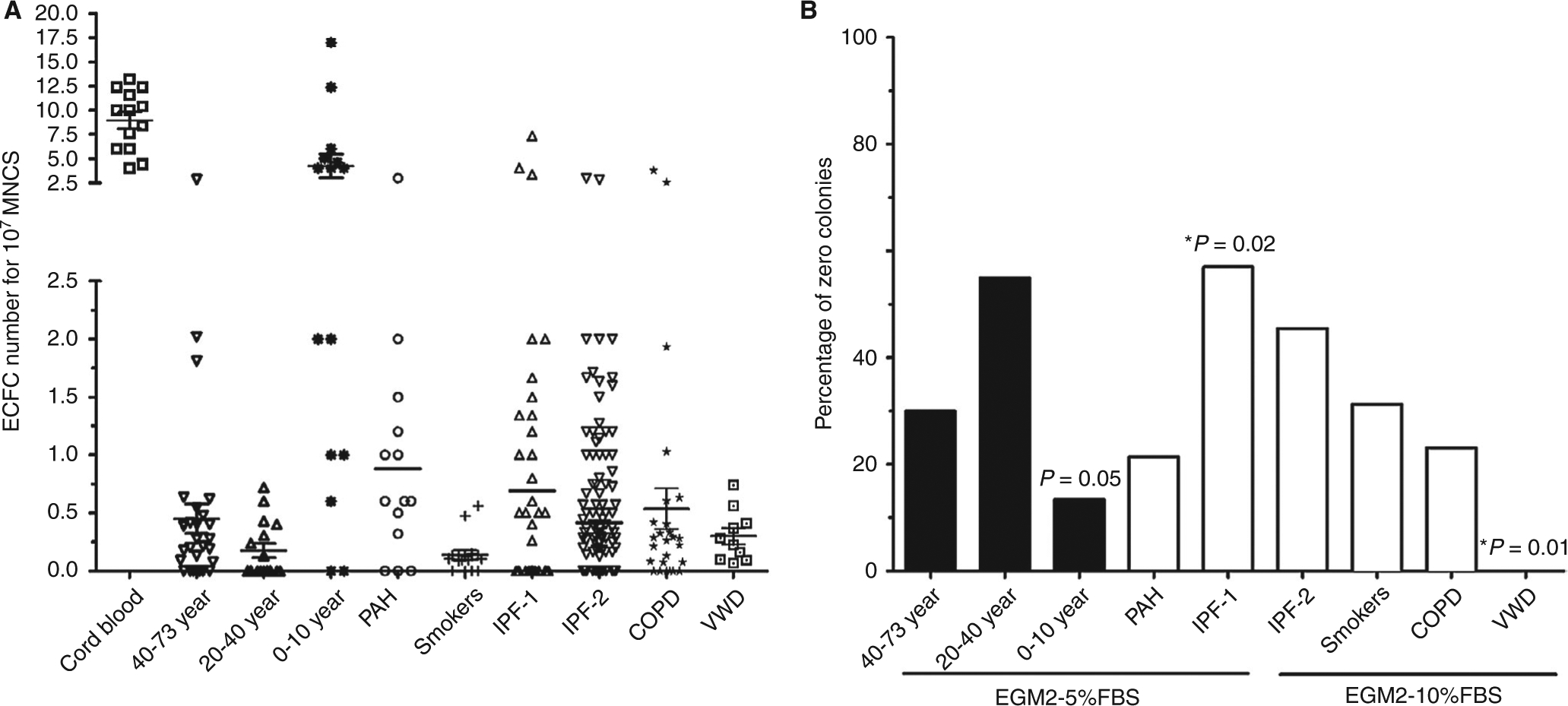FIGURE 1.

Quantification of endothelial colony-forming cells (ECFCs) in health and disease. A, Umbilical cord blood yields higher numbers of ECFC colonies than adult blood. In children (median age of 2 years), ECFC levels were higher than in adults. The association between age and ECFC levels appears to be lost in older subjects, and no significant differences were observed among subjects aged 20–73 years. ECFC levels have been examined in patients with von Willebrand disease (VWD) and with respiratory diseases, including pulmonary hypertension (PAH), chronic obstructive pulmonary disease (COPD), and idiopathic pulmonary fibrosis (IPF). In these patient groups, ECFC levels (colony numbers) did not appear to be significantly different from those in the healthy controls. For IPF patients, two separate cohorts comparing 5% (IPF-1) and 10% fetal bovine serum (FBS) (IPF-2) were compared and no differences in ECFC numbers were found. B, Levels of zero ECFC colonies were compared with the mean of the whole population (χ2 test or Fisher’s exact test when the number of zero colonies was <5). In healthy volunteers, the levels of zero ECFC colonies were significantly lower in the 0–10–year age group than in older groups (P = 0.05). In other populations, only VWD patients had significantly fewer zero ECFC colonies. For the IPF-1 and IPF-2 populations, we found that IPF-1 patients (with culture performed in EGM2–5% FBS) had more zero ECFC colonies than IPF-2 patients (with culture performed in 10% FBS). MNC, mononuclear cell
